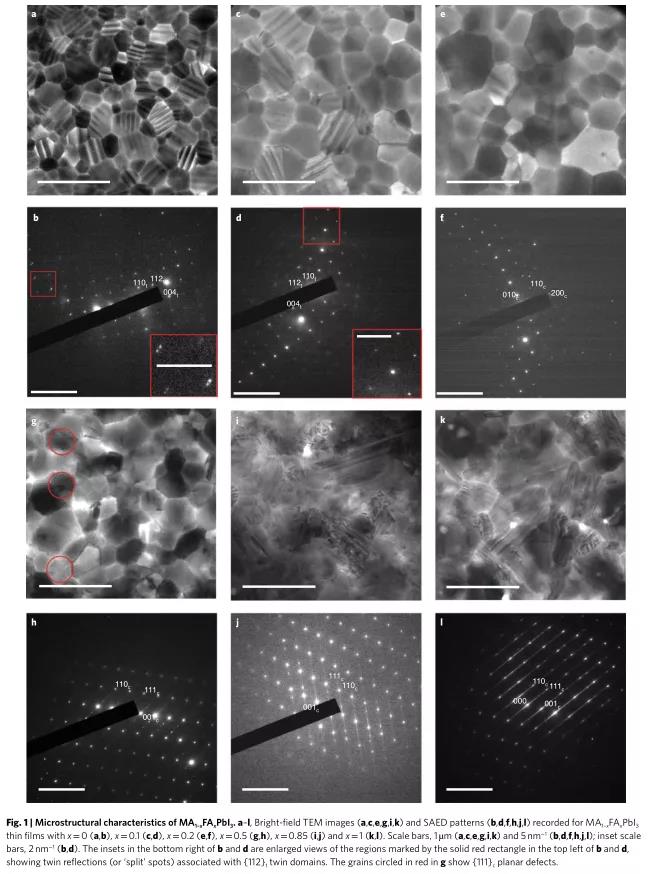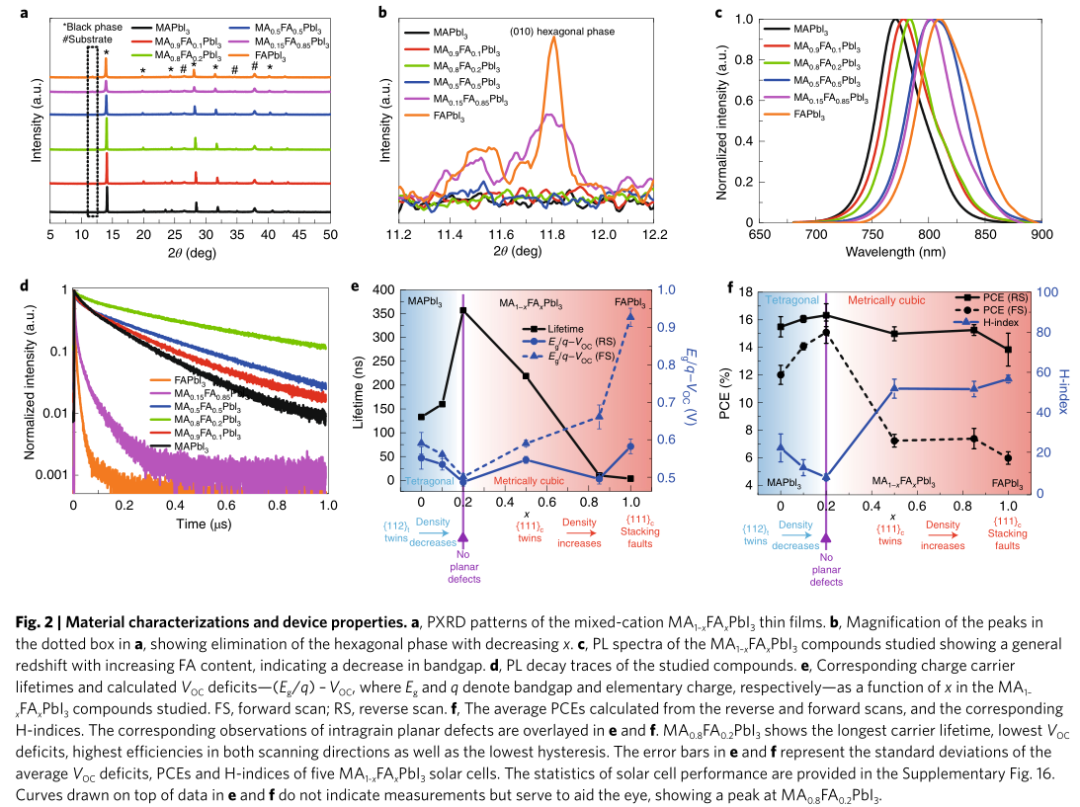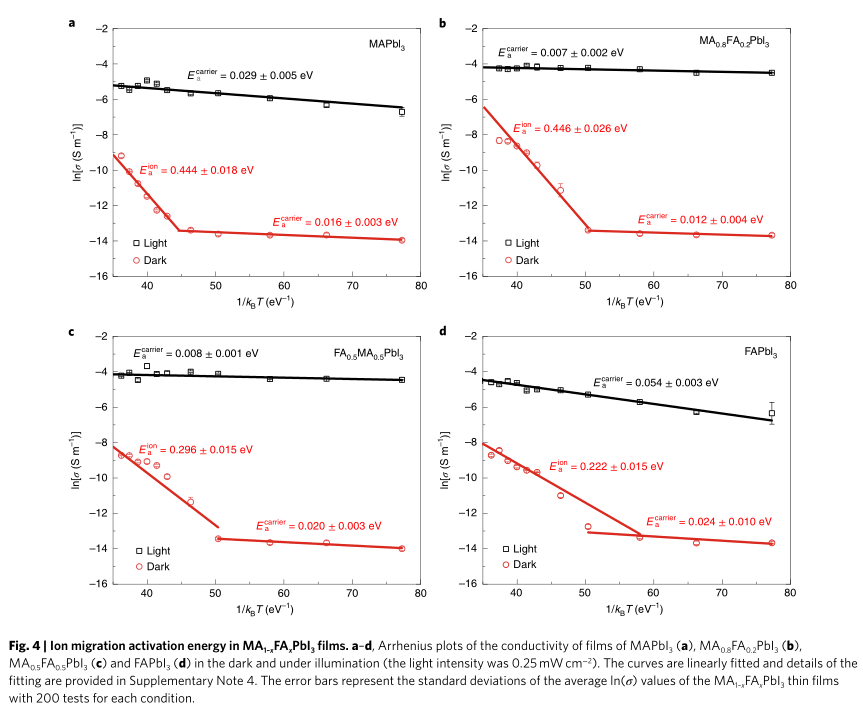



Perovskite solar cells show excellent photoelectric conversion efficiency, long carrier diffusion length and low recombination rate. This shows that the intragranular defects are benign electronically and have almost no effect on the performance of the device. In view of this, on June 14, 2021, the team of Cheng Yibing of Wuhan University of Technology and its cooperation team Joanne Etheridge team & Udo Bach team of Monash University in Australia published the research results of MA1-xFAxPbI3 intracrystalline defects on the performance of solar cells in Nature Energy. In this study, the composition of methyl ammonium (MA) / formamidine (FA) in MA1-xFAxPbI3 (x = 0Mel 1) was changed, and the structure and density of intracrystalline defects were compared with the device performance. It is found that the charge carrier lifetime, open-circuit voltage loss and current density-voltage lag are empirically related to the density and structure of {111} c plane defects (x = 0.5 ~ 1) and {112} t twin boundaries (x = 0-0.1). When there is no obvious intragranular defect (x = 0.2), the best performance parameters are found. Similarly, the performance is also improved by reducing the density of {111} c plane defects by MASCN gas phase treatment of FAPbI3 (x ≈ 1). These observations show that in addition to the established parameters (such as grain boundaries and interfaces), intragranular defect control can also provide an important way to improve the performance of perovskite solar cells.
This information is from the Internet for academic exchange only. if there is any infringement, please contact us to delete it immediately.






 Academic Frontier
Academic Frontier